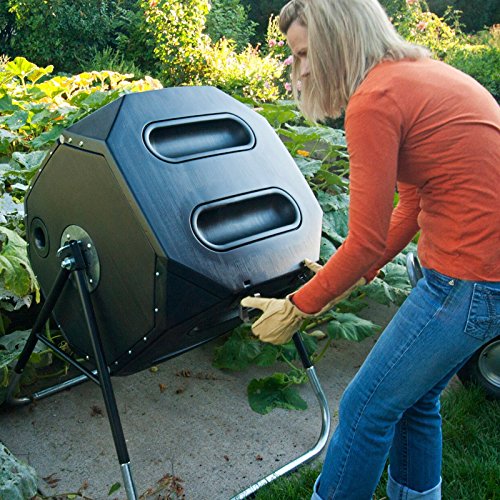Do you want your yard to be Compost Bin HQ? This post tells you all about composting and the different types of compost bins.
If you are reading this, you either know nothing about composting or think you know everything. Do you know what it is? When you compost, you break organic matter down naturally to produce nutrient-rich soil. You add the compost to fertilizer or other soil types, forming an excellent environment for plants to grow. By composting you are both disposing of waste and producing a substance that will improve the appearance and yield of all plants and flowers.
How do you make compost?
There are some general principles to adhere to, although the methods can vary. Most importantly, you need the right container to store the compost. There are all kinds of container types and designs. You can buy one, get a recycled one or make one yourself.
Why do you need a container? It is necessary to preserve the heat generated during composting, and this is done more easily in a container. You should always keep the lid on to maintain heat and keep rainwater out of the compost heap.
What may surprise you is that composting is a rather lengthy process – it can take up to nine months. It can take as little as two.
When selecting a type of bin, we recommend one with an access hatch at the bottom to get the compost out more easily. It tends to build up on the lower part with time, and form a lump mass that doesn’t break or crumble easily.
Slatted bins are a good idea, because of their disassembled sides, and the compost doesn’t spill out if it has developed generally. These bins also encourage better air circulation, aiding the ventilation of the heap.
What stuff can you compost?
Green yard waste is perfect for composting. This compost means things like clippings from shrubs and bushes and includes all kinds of green waste. If you’re going to use flowers, chop the stems and don’t use dead flowers. Add fruit and vegetable peelings, nettles for activation, young weeds, tea leaves, and vegetable crop residue.
It’s also possible to compost brown waste – this includes straw and hay, dead or fallen leaves, coffee grounds and filter, shredded paper, cardboard, sawdust and yard clippings. To be on the safe side, run all these things through a shredder.
You can also compost wool, wood ash, egg shells, hair, vacuum-bag contents, and cotton.
What not to compost
Don’t compost meat, fish, cat or dog feces or cat litter, because these can cause disease. Also, don’t compost glossy magazines, because they have a very high inorganic chemical content. Coal ash and barbecue coals contain harmful chemicals as well.
It pays off to shop around for a good compost bin. We hope we’ve been helpful with this information, and you’re leaving this site more aware of the issues surrounding composting than you were before! Hope you learned something new!
Written by Jen Brenner





















